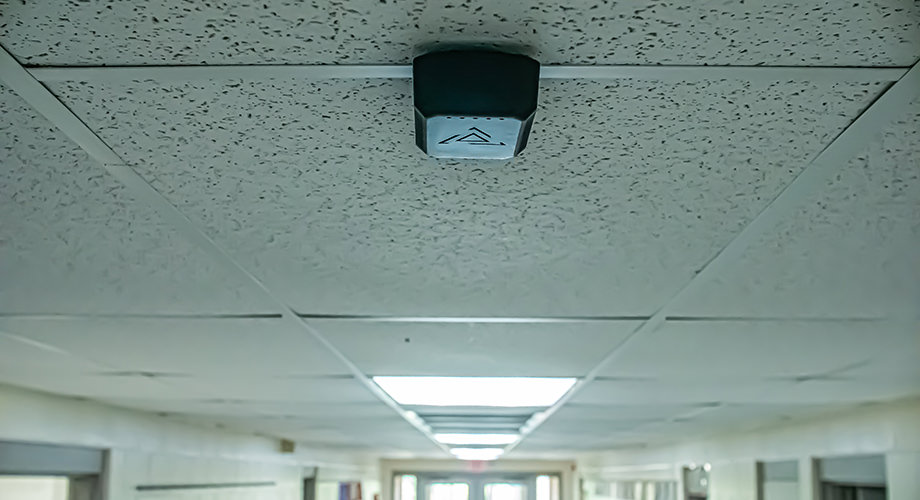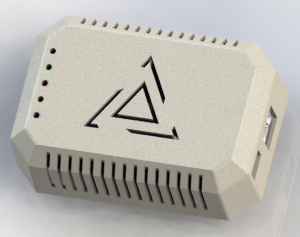Did you know? Automated Indoor Gunshot Detection systems exist and help save lives. Buildings secured with these systems have sensors placed throughout the building; these sensors continuously monitor the environment listening for a sound match to that of a gunshot.
Instantaneous detection of a gunshot by the sensors, ‘trigger’ (pun intended) a variety of responses. Digital, automated messages are sent immediately to emergency responders and security personnel. Voice calls are made without a human dialing the phone. The building’s PA system can broadcast information about the shots to help occupants know what’s going on. The exact location of the shot/s fired can be identified. Immediate, accurate, information helps save lives.
These efforts help building occupants determine their best response option (increasing their chance of survival) and allow emergency responders to get to the source of the threat as fast as humanly possible.
I’ve had the privilege of working cooperatively with a group of people who are committed to providing a solution in the event of an active shooter incident. Automated Indoor Gunshot Detection. Technology so smart, it can display a building map of a facility showing where the shot was fired. Technology so fast it can send messages to key stakeholders (emergency responders, for example) if subsequent shots are fired within seconds of each other. Technology so easy to use that it can integrate with lighting, video management and many other security and IT solutions all in an effort to improve response time during an active shooter incident to achieve one, laser focused goal:
Help. Save. Lives.
To our team, this is the daily grind. It’s on our minds most of the waking hours and the solution is oh so simple. It is logical. It just makes sense. But every once in a while, when we have an opportunity to discuss our solution, we meet someone – a police officer, a school administrator, a security professional – who has never heard of a gunshot detection system. Because it’s so engrained in our being, it’s actually hard to believe they’ve never heard of it. It’s an exciting opportunity because we are more than happy to introduce the concept to them. We feel gunshot detection systems have incredible value to anyone and everyone and will one day be standard security equipment. Why do we think that? Because it’s happened before.
Smoke alarms were not always standard security equipment in buildings. In fact, as recent as 1958, a large school fire killed 92 children and 3 nuns. The school was in full compliance with city and state fire code because it had passed prior fire regulations and was not required to retrofit to new standards. After this horrible tragedy, sweeping changes took place across the country and 68% of all communities across the US initiated fire safety improvement efforts. Changes were made in an effort to ensure this devastation wouldn’t happen again.
Active shooter incidents are multi-faceted problems that require multiple layers of solutions. Many schools, businesses and communities are now implementing active shooter response training and improving security efforts. Physical access controls and video management systems are standard security equipment in many buildings. While training and security improvements are helpful, there’s more that can be done. This is where gunshot detection sensors can provide instantaneous awareness and enhance the performance of other security equipment.
A building secured with gunshot detection sensors will have sensors placed throughout the structure, typically on the ceiling or high on the wall. The sensors continuously scan an environment listening for a sound match to that of a gunshot. Once detected and confirmed, the sensors can ‘trigger’ (pun intended) a variety of responses. Digital, automated messages can be sent to preselected individuals who would be most skilled and trained in containing the threat. Voice calls can be sent over the phone or through a building PA system. Digital signage can be an integrated source for the building map to populate and identify the location of the shot/s fired. These efforts help building occupants determine their best response option for safety and allow emergency responders to get to the source of the threat as fast as humanly possible. Utilization of automated, critical, specific information provided by indoor gunshot detection systems helps save lives.
You wouldn’t think of sending your child to a school that doesn’t have a smoke alarm system, nor would you expect any public place you go to lack this now regulated, required security device. The peace of mind that comes from early awareness from smoke detectors can be felt in an active shooter incident – if the building has a gunshot detection system. That early awareness provides seconds for response – and those seconds can help save your life.
We work tirelessly on feature sets, bug fixes and extremely complicated algorithms. Our goal is not only to provide a best in class Automated Indoor Gunshot Detection system, but to educate people so they know this amazing system, providing instant information that literally saves lives, is available and will work in their office buildings, schools, churches and the like. Now you know. Pass it on.



